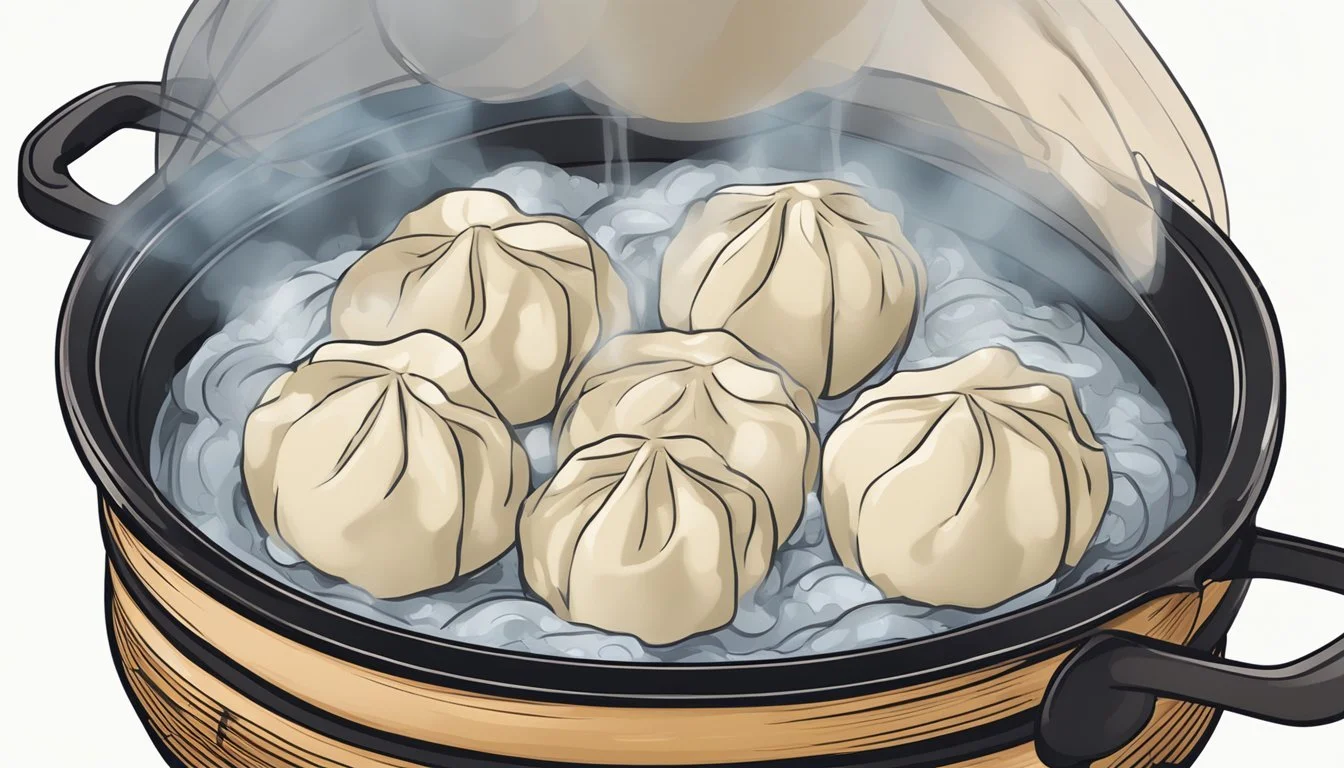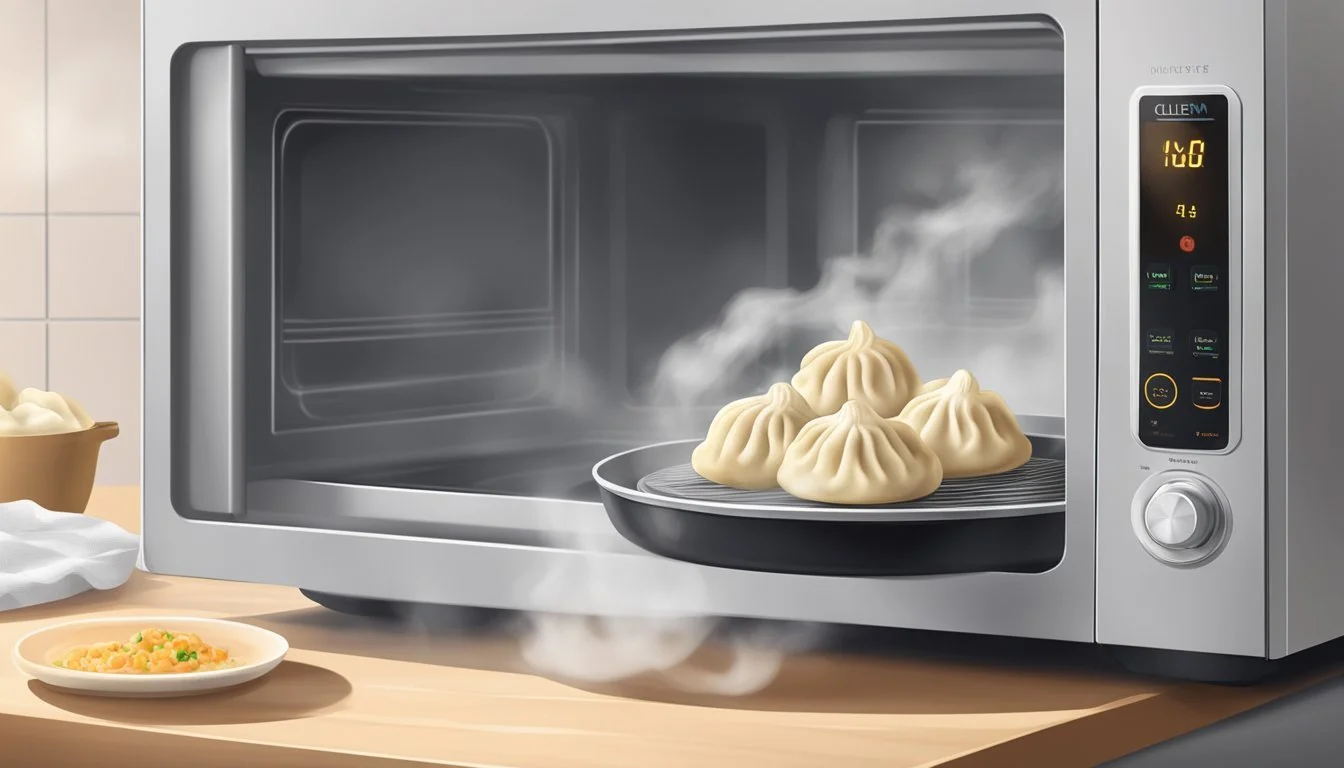How to Reheat Gluten-Free Dumplings for Perfect Texture and Flavor
Reheating gluten-free dumplings can be a bit tricky, but with the right techniques, you can enjoy them just as fresh as when they were first made. To maintain the dumplings' texture and flavor, it's crucial to use gentle heat methods such as steaming or microwaving with moisture. This helps in keeping the dough tender and prevents them from becoming dry or tough.
Steaming is perhaps the most recommended way to reheat gluten-free dumplings. This method ensures even heat distribution and helps retain the dumplings' pliability and taste. Alternatively, microwaving the dumplings with a damp paper towel can also help maintain the moisture, making them soft and delicious without drying out.
Both these methods will allow you to enjoy gluten-free dumplings just as much as the freshly cooked ones. Whether you're dealing with dumplings used in soups, casseroles, or even standalone dishes, gentle reheating is key to preserving their quality and making the most of your gluten-free creations.
Understanding Gluten-Free Dumplings
Gluten-free dumplings require unique ingredients and techniques to achieve a texture similar to traditional dumplings. The following points cover the essential aspects of preparing gluten-free dumplings, including the nature of gluten-free dough, the importance of selecting the right flour, and the role of xanthan gum.
The Basics of Gluten-Free Dough
Creating gluten-free dough involves several key steps. Traditional dough relies on gluten for elasticity and structure. In gluten-free cooking, substitute flour blends mimic these properties. Combining gluten-free flour with additional ingredients is crucial to achieving a dough that is easy to work with.
Ensure thorough mixing to incorporate all components evenly. This step is paramount to avoid lumps and ensure the dough binds well. Kneading by hand further smooths the texture, just as with traditional dough.
Selecting Suitable Gluten-Free Flour
Gluten-free flour selection significantly impacts the final product. Common gluten-free flours include rice flour, tapioca starch, and glutinous rice flour. Each type offers distinct properties. Rice flour provides a neutral taste and light texture, while tapioca starch adds chewiness.
A mix of different flours often yields the best results. Combining tapioca starch and glutinous rice flour, for instance, can simulate the texture of traditional dumplings. Experimentation may be required to find the perfect balance for specific recipes.
Importance of Ingredients Like Xanthan Gum
Xanthan gum plays an essential role in binding ingredients in gluten-free recipes. Without gluten, dumpling dough can lack the elasticity needed to hold its shape. Xanthan gum compensates for this by providing the necessary binding properties.
In a typical gluten-free dumpling recipe, a small amount of xanthan gum ensures the dough remains pliable and cohesive. This ingredient prevents the dough from falling apart during cooking and helps maintain the desired texture.
Understanding these core elements helps in creating delicious, gluten-free dumplings that match their gluten-filled counterparts in taste and texture.
Pre-Reheating Preparation
Proper storage and defrosting techniques are crucial for maintaining the texture and flavor of gluten-free dumplings. Attention to these steps ensures the dumplings heat evenly and retain their distinct taste and consistency.
Storing Dumplings Effectively
When storing gluten-free dumplings, an airtight container is essential. This prevents freezer burn and absorption of unwanted odors. To store, arrange the dumplings in a single layer on a baking sheet lined with parchment paper. Freeze until solid, then transfer them to an airtight container or zip-top bag.
Label the container with the date to keep track of freshness. Placing a sheet of wax paper between layers can further prevent the dumplings from sticking together. Proper storage techniques maintain the dumplings’ texture and make future reheating easier.
Defrosting Frozen Dumplings
Defrosting gluten-free dumplings requires gentle handling. For best results, move the frozen dumplings to the refrigerator and let them thaw overnight. This slow defrosting helps maintain the dumplings' texture and prevents them from becoming too soggy or breaking apart.
If in a hurry, use a microwave-safe plate and microwave on a low setting for short intervals, checking frequently. Be cautious not to overheat, as gluten-free dough can become dry or rubbery if mishandled. Once defrosted, the dumplings are ready for reheating using the desired method. The careful defrosting process ensures the dumplings' delicate structure remains intact.
Reheating Techniques
Reheating gluten-free dumplings can be achieved using various methods to maintain their texture and flavor. Whether opting to steam, boil, microwave, bake, or use an Instant Pot, each technique has its unique benefits.
Steaming for Optimum Texture
Steaming is an excellent method to preserve the soft and chewy texture of gluten-free dumplings. Use a steamer basket: Line it with parchment paper or cabbage leaves to prevent sticking. Place the dumplings in a single layer with space between them.
Boil water in a pot with a tight-fitting lid. Once boiling, place the steamer on top and cover. Steam the dumplings for about 5-10 minutes, depending on size. This method ensures even reheating without drying the dumplings out.
Boiling Without Losing Integrity
Boiling is another option for reheating gluten-free dumplings without altering their structure. Fill a pot with water and bring it to a gentle boil. Add a small amount of oil to the water to prevent the dumplings from sticking together.
Carefully place the dumplings into the boiling water. Cook for 2-3 minutes or until they are heated through. Remove with a slotted spoon and drain on a paper towel before serving. This method works well to keep the dumplings moist and tender.
Microwave Method for Quick Results
For a fast and convenient option, the microwave method can be used. Place the dumplings on a microwave-safe plate lined with a damp paper towel and leave space between each dumpling. Cover with another damp paper towel to trap steam and moisture.
Set the microwave to medium power and heat for 1 minute. Check and rotate the dumplings if needed, then continue heating in 30-second intervals until heated through. This method is ideal for quick reheating, but it may slightly alter the texture.
Using an Oven or Toaster Oven
Reheating dumplings in an oven or toaster oven can help achieve a slight crisp on the outside while keeping the inside moist. Preheat the oven to 350 degrees Fahrenheit. Arrange the dumplings on a baking sheet lined with parchment paper.
Lightly brush the dumplings with oil to prevent drying out. Heat for about 10-12 minutes, flipping halfway through. For a toaster oven, use the same settings but check at the 8-minute mark to avoid overcooking. This method adds a nice texture contrast.
Heating in an Instant Pot
Using an Instant Pot is another efficient way to reheat dumplings by steaming them. Add water to the inner pot and place a trivet at the bottom. Arrange the dumplings on a steamer basket or a heat-proof plate that fits the Instant Pot.
Seal the lid and set the Instant Pot to the "Steam" function for 3-5 minutes, depending on the dumplings' size. Quick release the pressure once done. This technique provides gentle and even reheating, effectively retaining the dumplings' original texture.
Serving Gluten-Free Dumplings
When serving gluten-free dumplings, consider portion sizes and pairings to enhance the dining experience. Complementary accompaniments create a balanced, enjoyable meal, especially for comfort foods like chicken and dumplings.
Best Practices for Serving Sizes
Gluten-free dumplings should be served in thoughtful portions to ensure they are both satisfying and leave room for other parts of the meal. Typically, three to four dumplings per person is a good starting point, depending on their size and the diners' appetites.
In a family-style meal, it's practical to prepare an additional batch to accommodate seconds. Smaller dumplings are perfect for soups and stews, while larger ones can stand alone or complement hearty dishes.
Ensure that the dumplings are uniform in size to help them cook evenly. Accurate serving sizes are essential in maintaining the dumplings' texture and flavor, contributing to a balanced meal.
Recommended Accompaniments
Gluten-free dumplings pair excellently with a variety of sides and main dishes. For a traditional comfort food approach, gluten-free chicken and dumplings are a perfect match. The rich, savory broth and tender chicken complement the fluffy dumplings.
Consider serving dumplings with:
Stews and casseroles: The warmth and depth of flavor in stews make an ideal backdrop for dumplings.
Soups: Light, clear broths or heartier options like chicken noodle soup enhance the dumplings' texture.
Vegetables: Steamed or roasted veggies like carrots and celery add color and nutrition to the meal.
Using butter adds richness and helps prevent sticking when serving dumplings. It also enhances the flavor, making the dish more indulgent.
Experiment with different pairings to find what works best, always keeping the diners' preferences in mind.
Advanced Tips and Tricks
Perfectly reheating gluten-free dumplings can be mastered with a few advanced strategies. Key factors like texture, dietary modifications, and seasoning play significant roles.
Ensuring Fluffy Texture Every Time
To maintain a fluffy texture, steam reheating is recommended. Place the dumplings in a steamer basket over boiling water for 5-10 minutes.
If you want to prevent a soggy outcome, avoid overcrowding the steamer. This allows even circulation of steam. For an added layer of fluffiness, lightly brush the dumplings with a mixture of egg and water before steaming.
Using this method ensures that the gluten-free dumplings not only stay light but also hold their shape.
Variations for Dietary Restrictions
For those needing dairy-free options, ensure that the steaming method is used because it avoids the need for oils or butter. If using the frying method, opt for vegetable oil instead of butter.
For extra flavor without dairy, sprinkle in herbs such as parsley. A mix of salt and pepper also enhances the taste without adding dairy. This allows dietary adjustments without compromising on flavor.
Those with egg allergies can use a flaxseed and water mixture as a substitute in recipes that call for eggs.
Seasoning and Flavor Enhancements
Seasoning is crucial for gluten-free dumplings to enhance their natural taste. Before reheating, toss the dumplings lightly in a mix of soy sauce and sesame oil for a rich flavor.
Sprinkle parsley and finely ground pepper after reheating for a fresh touch. For a bit of zing, add a pinch of grated ginger and minced garlic. Spice blends like cumin and turmeric can introduce new dimensions of flavor.
Strategically incorporating these elements will make your reheated dumplings irresistible.
Troubleshooting Common Issues
When reheating gluten-free dumplings, common problems include sogginess and the dumplings falling apart. Let's explore practical ways to avoid these issues.
Dealing with Soggy Dumplings
Soggy dumplings can be a major disappointment. To maintain the desired texture, it's important to use the right reheating methods and avoid excess moisture.
Steaming: Place dumplings on a layer of parchment paper in the steamer, leaving the edges uncovered for steam to circulate. Steam them briefly to prevent overcooking.
Air Frying: For a crispier finish, lightly brush the air fryer basket with oil. Preheat to 350°F and reheat the dumplings for no more than six minutes, flipping them halfway through.
Pan Frying: Add a small amount of neutral cooking oil to a pan over medium heat. Ensure dumplings don't touch. Add a minimal amount of water to create steam, and immediately cover with a lid. This method retains moisture inside while keeping exteriors crispy.
Preventing Dumplings from Falling Apart
Gluten-free wrappers can be delicate. Proper handling and reheating techniques are crucial to maintaining their structure.
Handling Carefully: Always handle frozen dumplings gently to avoid breaking the wrappers. Use a toothpick to create tiny vents in the wrapper to release steam.
Gentle Reheating: When using a pan, reduce heat to medium-low after adding dumplings. This prevents the wrappers from splitting due to rapid temperature changes. Covering the pan with a lid during steaming helps maintain an even heat.
Even Heating: In an air fryer, ensure dumplings are placed in a single layer with space between each one. This ensures even airflow and prevents sticking, aiding in maintaining the shape and integrity of the dumplings.





